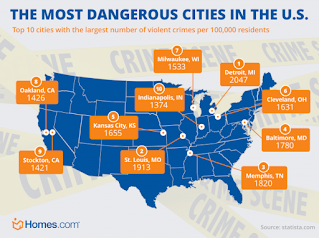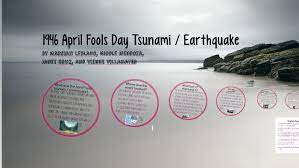From Worldometer (new COVID-19 deaths yesterday):
DAY USA WORLD Brazil India South Africa
June 9 1093 4732 1185 246 82
July 22 1205 7128 1293 1120 572
Aug 12 1504 6556 1242 835 130
Sept 9 1208 6222 1136 1168 82
Oct 21 1225 6849 571 703 85
Nov 25 2304 12025 620 518 118
Dec 30 3880 14748 1224 299 465
Jan 14 4142 15512 1151 189 712
Feb 3 4005 14265 1209 107 398
25 2414 10578 1582 119 144
Mar 2 1989 9490 1726 110 194
31 1115 12301 3950 458 58
April 6 906 11787 4211 631 37
May 4 853 13667 3025 3786 59
26 607 12348 2399 3842 101
June 1 287 10637 2346 3205 95
30 249 8505 2127 991 383
July 7 251 8440 1595 817 411
13 307 8117 1613 623 633
Summary:
- Suddenly, Indonesia yesterday had the most number of new cases at 47,899, with Spain #3 to Brazil's #2.
- However, while Indonesia also had the second most number of new deaths with 864, Spain only had 13 new deaths. Something does not read right here.
- Africa is showing a serious ascent, and not only South Africa.
For the topic of the day, I typed into my computer, which is the deadliest city in the world, and saw that Tijuana is it. I was looking for those sites threatened by natural hazards, but since I found this information:
- #1 Tijuana, Mexico: 138 homicides/100K people. Drug trades and human trafficking by gangs are why.
- #2 Acapulco, Mexico: The playground for the Hollywood set is now in a drug war. 111 homicides/100K people. You might adjust your vacation plan if these two Mexican cities were being considered.
- Caracas, Venezuela: 100 murders/100K people, cause by poverty, poor law/order. Kind of forget Central and much of South America
Incidentally, #1 in the USA with 65 murders/100K residents is St. Louis. Next Baltimore with 58...and you'd never have guessed #3 correctly...Birmingham, Alabama with 51 murders/100K. Yikes, Baton Rouge is #6 with 32. I spent almost four years there. And, New Orleans is #7 with 31, but I knew that was problem back then. #13 is Washington, D.C. at 25, and spent three years there. I partly left because I thought it was a dangerous place. Wait a minute, where is Chicago? #28 with only 18. I don't see New York City on this list of 65 worst. But then, it depends on which study. The map on the left is from Statista. Click on it to read the details.
So the United States is not too bad about murders. However, the World Peace Index says that the USA is only the 128th safest country, meaning we are way below average. Progress, for the latest index that just came out says we are better than that: #122. Did it help that Biden is now president?
- #1 Iceland
- #5 Slovenia (huh, where is this?)
- #28 Mauritius (I want to go back there, one of my favorite places)
- #41 Botswana (Hawaii's antipode, and #1 for not being involved in wars)
- #50 Vietnam
- #67 Kazakhstan
- #80 Kosovo
- #83 Rwanda
- #87 Cuba
- #100 China
- #113 Thailand
- #122 USA
- #123 South Africa (which I have avoided)
- #140 Mexico
- #141 Iran
- #143 Israel (#1 for danger from wars)
- #151 North Korea
- #154 Russia
- #163 Afghanistan
Here is a particularly interesting quote:
The global economic impact of violence was $14.96 trillion PPP in 2020, equivalent to 11.6 per cent of global GDP or $1,942 per person. The year-on-year increase was primarily due to higher levels of military expenditure.
Of course our USA is the culprit here:
Well, returning to the topic of the day, I actually knew the answer about cities in peril, and selected this topic because I wanted to feature the location of the Summer Olympics, Tokyo. According to Business Insider:
- #1 Tokyo-Yokohama, Japan
- 57 million in jeopardy, and death could be instantaneous.
- I was in a 7.1 earthquake there. That was a mere blip for people living in Tokyo. But what was the highest Moment Magnitude earthquake you've experienced? The Richter Scale is now obsolete.
- Earthquakes, typhoons, floods and tsunamis.
- I might add that Honolulu is similarly in danger, but we never make any of these lists. I wonder why.
- Maybe it's because a hurricane has never made landfall over my island of Oahu in recorded history.
- An 1868 earthquake on the Big Island might have been at 8.1 MM. But the worst for Oahu was only a 4.8 in 1948, and even that one was offshore.
- The 1946 April Fool's Day tsunami from Alaska reached an amplitude of 55 feet.
- But that was the Big Island.
- Supposedly a million years or so ago part of Lanai fell into the ocean, creating a 1000 foot tsunami.
- Then there was the 2000 foot tsunami 1.5 million years ago when a third of the northern portion of Molokai crashed into the sea.
- I'm writing a book where a larger chunk of the Big Island crashes into the sea, creating a mega tsunami headed for the West Coast of the USA.
- Oahu experienced wave heights up to 36 feet at Kaena Point and 27 feet in the region around Kahuku Point. I have visited this latter site where huge boulders can still be seen inland. Waikiki went up to 9 feet, with Honolulu Harbor only attaining 4 feet. Reefs apparently help protect.
- I haven't found a good reference about a serious tsunami to hit Hawaii emanating from South America. Then, Waikiki and Honolulu should be in severe danger.
- However the 9.5 MM 23May1960 Chile tsunami which killed 61 in Hilo with a wave amplitude up to 20 feet, only got up to 5 feet in Honolulu. I was in California for that one.
- #2 Manila, Philippines
- 34.6 million people.
- Typhoons are particularly a threat. The three most powerful typhoons ever, all at 190 MPH and stronger, made landfall here.
- Earthquakes are possible.
- #3 Pearl River Delta. China
- 34.5 million in the cities of Shenzhen, Hong Kong, Dongguan, Macau and Guangzhou.
- Storm surge, cyclonic winds and floods.
- #4 Osaka-Kobe, Japan
- 32.1 million.
- The 1995 Great Hanshin earthquake killed 6,000, causing $100 billion in damage.
- Also tsunamis and typhoons.
- #5 Jakarta, Indonesia
- 27.7 million.
- 40% of the city is below sea level.
- Floods.
- Others in the top ten were Nagoya, Kolkata, Shanghai, Los Angeles and Teheran.
- I have been to all but Teheran.
Cities@risk outlook, a more comprehensive assessment, indicates that Asia is home to 99 of the World's 100 cities facing the greatest environmental challenges.
- 576 of the world's largest cities were included in all aspects of the environment.
- #1 worst was Jakarta, and #2 New Delhi.
- Europe is home to 14 of the 20 safest cities, and Glasgow, host for the next UN climate conference in November, is the least vulnerable city to this problem
- India had 13 of the top 20 cities, with air quality being the problem.
- China had 37 terrible cities. If you've been to China, especially in January and February, as I have several times, you don't want to go back, and I won't.
- Interestingly enough, while African cities were fairly safe, 38 of the 40 cities from that continent are most at risk from global warming.
- The most vulnerable U.S. city is Los Angeles, mostly for air quality.
- This article has colorful graphics, which you need t click on to read:
- Business Standard provided the following:
So what it comes down to are the parameters used to determine worst/deadliest/riskiest/whatever city in the world.
Conversely, which are the safest cities in the world? And this is a shocker. The Economist in 2019 did such a ranking incorporating, digital, health, infrastructure and personal security. Based on the above, incredibly, Tokyo was rated the SAFEST!!!
- #1 Tokyo
- #2 Singapore
- #3 Osaka
- #4 Amsterdam
- #5 Sydney
- #6 Toronto
- #7 Washington, DC (what???...I lived there...personal security is a huge problem)
- #8 Copenhagen
- #8 Seoul
- #10 Melbourne
- #11 Chicago
- #13 San Francisco
- #15 New York City
- #17 Los Angeles
- #23 Paris
- #31 Beijing
- #37 Moscow
- #47 Bangkok
- #52 New Delhi
- #60 Lagos
How can the same city be the most hazardous and the safest? It depends on the parameters of consideration.
Maybe it doesn't matter, for things can very rapidly change. I recall way back around 1980 when a survey showed that the Falklands was the safest place to live on Planet Earth. Then in 1982 came the war with the UK and everything changed.
In all the above no study even mentioned Mount Fuji as to why Tokyo might be in danger. While the last major eruption occurred in 1707, there apparently is a link to the 2011 Great Tohoku Earthquake that caused the tsunami and nuclear cataclysm. And this volcano is only 60 miles away from Tokyo. Also too, there is a 70% probability of a major earthquake in Tokyo or off the coast in the next 30 years.
But you can't spend all your time worrying about natural or man-made disasters no matter where you live. Honolulu is particularly vulnerable to a major hurricane, serious earthquake, damaging tsunami, or perhaps even a nuclear bomb accidentally exploding in storage at Pearl Harbor. Those are the conditions one faces in Paradise. I love it here and am not the least bit worried.
-




















Comments
Post a Comment